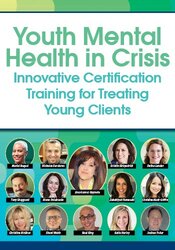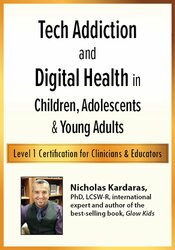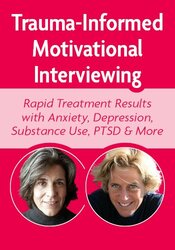4 Evidence-Based Clinical Interventions for Problematic Screen Use

In today’s digital age, we are witnessing unprecedented shifts in how children and adolescents interact with the world. Screens have become central to daily life. And while technology can enhance learning and provide connection, excessive or unmonitored use is strongly linked to higher rates of depression, anxiety, ADHD symptoms, suicidality, and social withdrawal.
As clinicians, we must understand both the risks and the pathways toward healthier digital engagement. This article draws from current research and clinical practice to outline strategies for intervention at both the individual and systemic levels.
Understanding the Risks of Excessive Screen Use
Research has shown that teens who spend more than five hours daily on screens are 70% more likely to experience suicidal thoughts or actions compared to peers with limited screen time. Young people are especially vulnerable because:
- Developmental needs conflict with digital immersion. Excessive screen time disrupts normal brain development in areas related to memory, imagination, and creativity. For example, preschoolers exposed to more than an hour of unsupervised screen use show diminished white matter development in regions critical for language and literacy.
- Social comparison intensifies distress. The more digital “friends” or followers a youth has, the more likely they are to experience loneliness and depression. Social media connections often act as counterfeit connections.
- Algorithms amplify vulnerabilities. Platforms push content tailored to body image issues, self-harm, or other psychological “Achilles heels,” reinforcing distress and fueling compulsive engagement.
Clinical Interventions for Therapists
1. Screen Use Assessment as Part of Intake
Just as substance use or sleep patterns are standard intake questions, screen habits should be routinely assessed. Ask:
- How many hours per day are spent on devices?
- What platforms are most used (gaming, social media, streaming)?
- What happens when access is limited or removed?
This helps identify whether screen use is an adaptive coping tool, a maladaptive escape, or rising to the level of a disorder.
2. Psychoeducation and Motivational Interviewing
Many clients (and parents) still underestimate the psychological risks of excessive screen use. Use psychoeducation backed by data. For example: reducing social media to one hour per day for three weeks significantly decreases depression, anxiety, and FOMO while improving sleep. Motivational interviewing can help build intrinsic motivation for change.
3. Address Underlying Distress
Like substance use, problematic screen use often serves as a form of digital escapism. Treatment is more effective when therapists explore and intervene around the underlying issues like loneliness, trauma, or mood disorders so the client feels less “thirsty” for the escape screens provide.
4. Structured Behavioral Interventions
- Introduce “digital detox” experiments: phone-free mornings or evenings, tech-free zones in the home, or gradual time reduction.
- Encourage replacement behaviors: creative play, physical activity, face-to-face socializing, or mindfulness.
- Use CBT or ACT approaches to help clients observe urges without acting on them, defuse from the “pull” of the device, and align choices with values.
Problematic screen use is not just a behavioral quirk. It is a public health issue with profound implications for the mental well-being of young people. Clinical interventions can reduce reliance on screens by addressing both the symptoms and root causes of distress. As therapists, we have an opportunity and responsibility to help young people and families navigate this digital landscape with greater resilience, awareness, and balance.

Certification course with experts, become a CYMHS, help kids thrive in mental health crisis.

We are on the verge of a global public health crisis—and the kids, teens and young adults you work with are at the greatest risk.

Learn trauma-informed motivational interviewing skills and integrate CBT & DBT. Get techniques to treat PTSD, substance abuse, depression, anxiety and more.





